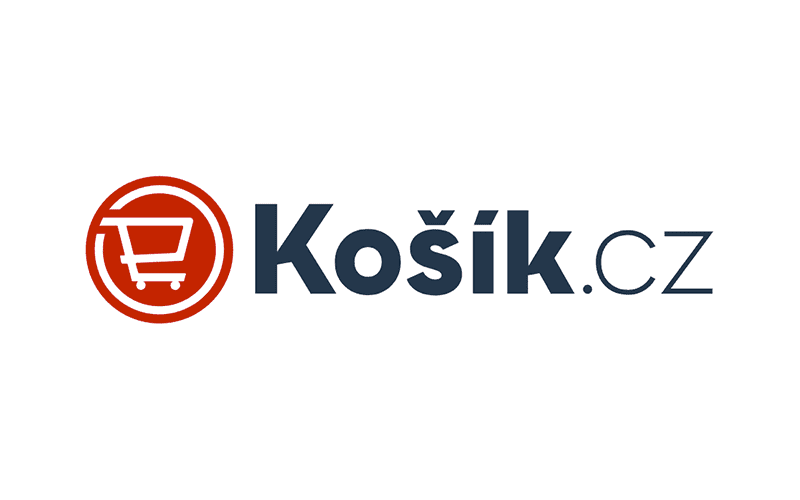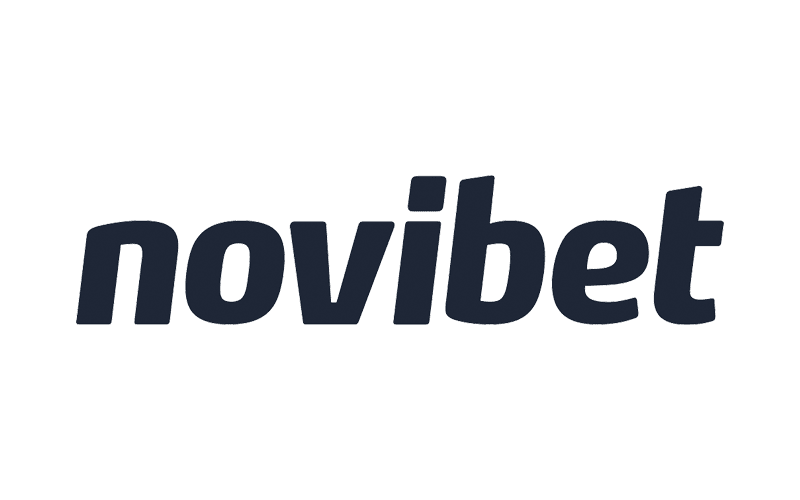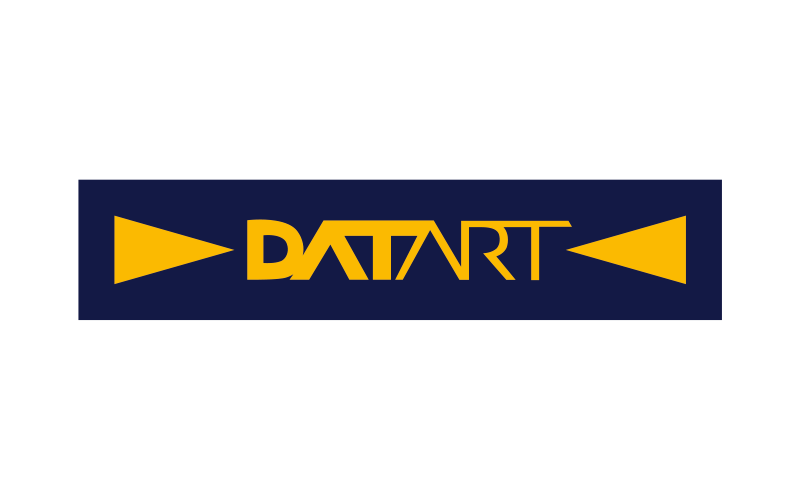Data activation and optimization
Leverage all available data tools and methods for marketing that engages and outperforms
How to optimize and activate the power hidden in data?
Optimizing and activating all available marketing data are vital processes driving better performance. Defining clear customer profiles, segmenting your data to precise audiences, and then testing assets via different tools and methods, including smart bidding, personalized dynamic ads or incrementality experiments, that's what's ahead of us.
Why
optimize and activate
1
Agile
adaptation
Adapt quickly to changing and challenging market conditions
2
Delivering on customer expectations
You will know, not guess, what the customer prefers and wants.
3
Improved
marketing ROI
Activate newly found insights and use new modern methods to deliver your message results in better business.
Key* Components of Activation and Optimization
By understanding customer behaviors and market trends, businesses can personalize experiences and optimize their strategies through A/B testing and predictive analytics. Continuously monitoring performance and automating processes streamline operations, leading to increased efficiency and growth. Emphasizing data activation and optimization allows organizations to make data-driven decisions, enhance customer experiences, and achieve better results in today's competitive landscape.
Solution
details & steps
A Customer Data Platform (CDP) is a centralized software platform that collects, integrates, and manages customer data from various sources to create a unified and comprehensive view of individual customers. It serves as a single source of truth for customer data, allowing organizations to gain insights into customer behavior, preferences, and interactions across multiple channels.
A CDP collects data from both online and offline sources, such as websites, mobile apps, CRM systems, social media platforms, and more. It integrates and organizes this data, resolving identity and data inconsistencies, to create unified customer profiles. These profiles contain a wide range of data attributes, including demographic information, purchase history, browsing behavior, engagement data, and customer preferences.
The primary goal of a CDP is to enable organizations to better understand their customers and deliver personalized experiences. By leveraging the unified customer data within the CDP, organizations can segment their customer base, target specific customer segments with personalized marketing campaigns, and tailor product recommendations and messaging.
CDPs typically provide features for data collection, data integration, data cleansing and enrichment, identity resolution, segmentation, and campaign activation. They often integrate with other marketing tools and systems, such as email marketing platforms, marketing automation tools, and CRM systems, to orchestrate personalized marketing campaigns and customer interactions across multiple channels.
Overall, a Customer Data Platform helps organizations harness the power of customer data to drive data-driven marketing strategies, enhance customer experiences, and achieve business growth. It enables marketers to make more informed decisions based on a comprehensive understanding of their customers, leading to improved customer engagement, loyalty, and ROI.
Challenges
Data Integration and Quality:
One of the primary challenges with a CDP is integrating and ensuring the quality of the data. Organizations often have data spread across various systems and platforms, such as CRM systems, marketing automation tools, e-commerce platforms, and more. Consolidating and integrating these disparate data sources into a unified view within the CDP can be complex and time-consuming. Data quality issues, such as incomplete or inaccurate data, can also arise during the integration process. Ensuring the data is clean, standardized, and of high quality is crucial for maximizing the effectiveness of the CDP.Privacy and Compliance:
Privacy and compliance considerations are paramount when dealing with customer data. Organizations must adhere to privacy regulations such as GDPR and CCPA and respect customer preferences regarding data usage. Implementing robust data governance practices and obtaining necessary consents while maintaining transparency become critical challenges. Striking the right balance between personalization and privacy is essential to build trust with customers and avoid potential legal or reputational risks.Organizational Alignment and Change Management:
Implementing a CDP often requires cross-functional collaboration and organizational alignment. It may involve integrating teams, processes, and technology across marketing, sales, IT, and other departments. This alignment can be challenging, as it requires breaking down departmental silos, fostering collaboration, and establishing shared goals. Additionally, change management is crucial to ensure buy-in from stakeholders, provide adequate training, and drive adoption of the CDP throughout the organization. Overcoming resistance to change and managing cultural shifts are key challenges in successfully implementing and maximizing the value of a CDP.
Benefits
Single Customer View and Unified Data:
A CDP enables organizations to create a unified view of their customers by integrating data from various sources into a centralized platform. It consolidates data from disparate systems such as CRM, marketing automation, e-commerce, and more. Having a single customer view allows organizations to gain a holistic understanding of their customers' interactions, behaviors, preferences, and purchase history. This comprehensive view helps in delivering personalized experiences, targeted marketing campaigns, and more effective customer engagement across multiple touchpoints.Enhanced Customer Segmentation and Personalization:
With a CDP, organizations can leverage the unified customer data to create more refined customer segments and deliver personalized experiences at scale. By analyzing the data within the CDP, businesses can identify patterns, trends, and customer segments based on demographics, behaviors, preferences, and other attributes. This segmentation allows for targeted and personalized marketing campaigns, tailored product recommendations, and relevant messaging. The result is improved customer engagement, increased conversions, and higher customer satisfaction.Improved Customer Insights and Data-Driven Decision Making:
A CDP empowers organizations to derive actionable insights from customer data and make data-driven decisions. By analyzing the unified and enriched data within the CDP, organizations can uncover valuable insights about customer behaviors, preferences, and lifetime value. These insights help in identifying cross-selling and upselling opportunities, optimizing marketing strategies, refining product offerings, and improving customer retention. Data-driven decision making allows organizations to make informed choices, optimize resources, and drive business growth.
Customer profiles are detailed representations of individual customers that capture key information about their preferences, behaviors, demographics, and interactions with a business. These profiles provide a comprehensive view of each customer, allowing organizations to understand their needs, personalize interactions, and deliver tailored experiences. Customer profiles enable targeted marketing campaigns, personalized product recommendations, and effective customer service. By leveraging customer profiles, businesses can enhance customer satisfaction, increase engagement, improve retention, and drive business growth through data-driven decision-making.
Challenges
Data Quality and Consistency:
One of the primary challenges in customer profiling is ensuring data quality and consistency. Organizations often deal with data from multiple sources, such as CRM systems, transactional databases, social media platforms, and more. Inconsistent or incomplete data, data duplication, or outdated information can lead to inaccurate customer profiles. Maintaining data integrity and implementing robust data governance practices are crucial to address this challenge.Data Privacy and Compliance:
Customer profiling involves handling sensitive customer data, which raises concerns regarding data privacy and compliance. Organizations must comply with regulations, such as GDPR or CCPA, and ensure that customer data is appropriately collected, stored, and utilized in a privacy-conscious manner. Balancing data utilization with customer privacy rights and obtaining necessary consents can be challenging while creating comprehensive and compliant customer profiles.Data Integration and Fragmentation:
Customer data is often spread across multiple systems and platforms, resulting in data fragmentation and challenges in integrating data sources. Bringing together data from various touchpoints and channels, such as online interactions, offline purchases, or customer service interactions, can be complex. Organizations need to invest in data integration technologies, APIs, or data warehousing solutions to unify and integrate customer data effectively.Data Interpretation and Accuracy:
Interpreting customer data accurately to create meaningful customer profiles can be challenging. Determining relevant attributes, understanding data relationships, and deriving actionable insights from customer data require advanced analytics capabilities. Without proper data analysis skills or the right tools, organizations may struggle to extract accurate and valuable insights from customer data, hindering the creation of comprehensive customer profiles.
Benefits
Personalized Customer Experiences:
Customer profiles provide a comprehensive view of individual customers, including their preferences, behaviors, purchase history, and demographics. By leveraging this information, organizations can deliver highly personalized experiences tailored to each customer's specific needs and preferences. Personalization enhances customer satisfaction, increases engagement, and fosters long-term loyalty.Targeted Marketing and Campaigns:
Customer profiles enable targeted marketing and campaign strategies. By understanding customer segments and their characteristics, organizations can create more precise and relevant marketing campaigns. Targeted messaging, customized offers, and tailored content resonate better with customers, leading to improved campaign effectiveness, higher conversion rates, and increased return on marketing investment.Customer Segmentation and Insights:
Customer profiles facilitate segmentation based on various attributes, such as demographics, behavior, purchase history, or preferences. By segmenting customers, organizations can gain insights into different customer groups, their behaviors, and specific needs. This understanding enables businesses to develop targeted strategies for each segment, optimize resource allocation, and identify opportunities for growth.Improved Customer Retention and Loyalty:
Customer profiles aid in identifying high-value customers, frequent buyers, or those at risk of churning. By proactively managing customer relationships based on their profiles, organizations can implement targeted retention strategies. Providing personalized incentives, loyalty programs, or proactive customer support helps in retaining valuable customers and fostering long-term loyalty.Enhanced Product Development and Innovation:
Customer profiles provide valuable insights into customer preferences, feedback, and unmet needs. By analyzing customer profiles, organizations can identify trends, patterns, and opportunities for product development and innovation. Understanding customer pain points and desires allows businesses to tailor product offerings, enhance features, and introduce new products that align with customer expectations.Improved Customer Service and Support:
Customer profiles equip customer service teams with the necessary information to deliver excellent service. By having a comprehensive view of customer profiles, support agents can provide personalized assistance, anticipate customer needs, and resolve issues more effectively. This leads to improved customer satisfaction, reduced churn, and increased brand advocacy.Data-Driven Decision Making:
Customer profiles provide a foundation for data-driven decision-making across various business functions. By leveraging customer insights, organizations can make informed decisions related to product strategy, marketing campaigns, customer acquisition, pricing, and more. Data-driven decision-making enhances overall business performance and helps organizations stay ahead in a competitive market.
By leveraging customer profiles, organizations can better understand and serve their customers, drive customer-centric strategies, and foster long-term relationships. This leads to improved customer satisfaction, increased loyalty, and ultimately, business growth and success.
Segmentation is the process of dividing a larger target market into smaller, distinct groups or segments based on shared characteristics, behaviors, or needs. By segmenting the market, organizations can better understand their customers and tailor their marketing strategies to specific groups. Segmentation allows businesses to identify different customer segments with unique preferences, buying behaviors, demographics, or psychographics. This enables organizations to create targeted marketing campaigns, customize product offerings, optimize resource allocation, and enhance customer experiences. Effective segmentation helps businesses better meet customer needs, increase customer satisfaction, improve marketing effectiveness, and drive overall business growth.
Challenges
Data Quality and Availability:
Obtaining high-quality and relevant data for segmentation can be a challenge. Organizations may struggle with data limitations, inconsistencies, or incomplete data sets. Ensuring data accuracy, reliability, and comprehensiveness is essential for effective segmentation. It requires investing in data collection methods, data cleansing processes, and integration across various sources.Identifying Meaningful Segmentation Variables:
Selecting the right variables to segment the target market is crucial for successful segmentation. Determining which attributes, behaviors, or characteristics are most relevant for differentiation can be challenging. Organizations must conduct thorough research, market analysis, and customer profiling to identify meaningful segmentation variables that align with their business objectives.Balancing Homogeneity and Distinctiveness:
Striking a balance between creating homogenous segments and ensuring distinctiveness can be a challenge. Segments should be internally similar in terms of customer characteristics or behaviors while being externally distinct from other segments. Finding the right level of granularity and avoiding segment overlap or ambiguity is essential to tailor marketing strategies effectively.Actionability and Implementation:
Developing actionable and practical marketing strategies for each segment can be a challenge. Once segments are identified, organizations must translate the insights into actionable tactics and initiatives. This requires understanding the unique needs, preferences, and communication channels of each segment and aligning marketing efforts accordingly. Implementing tailored strategies for each segment can require significant resources, coordination, and organizational buy-in.
Benefits
Targeted Marketing and Personalization:
Segmentation allows organizations to tailor their marketing efforts to specific customer segments. By understanding the unique characteristics, needs, and preferences of each segment, businesses can develop customized marketing strategies, messages, and offers. This targeted approach increases the relevance and effectiveness of marketing campaigns, leading to higher customer engagement, improved conversion rates, and stronger customer relationships.Resource Optimization and Efficiency:
Segmentation helps organizations allocate their resources effectively. By focusing marketing efforts on specific segments, businesses can optimize their budget, time, and manpower. Instead of using a one-size-fits-all approach, resources can be allocated strategically to segments with higher potential for sales and profitability. This resource optimization improves the efficiency of marketing campaigns, maximizes return on investment, and minimizes wasteful spending.Enhanced Customer Satisfaction and Loyalty:
Segmenting customers allows organizations to deliver more personalized experiences, products, and services. By understanding the unique needs and preferences of each segment, businesses can provide tailored solutions that meet their specific requirements. This personalized approach enhances customer satisfaction, increases brand loyalty, and promotes repeat purchases. Satisfied and loyal customers are more likely to become brand advocates, refer others, and contribute to long-term business success.
Segmentation empowers organizations to understand their customers better, target their marketing efforts, optimize resources, and deliver personalized experiences. By leveraging segmentation effectively, businesses can drive customer satisfaction, loyalty, and achieve better marketing results.
Audiences, in the context of marketing and advertising, refer to specific groups of individuals who share similar characteristics, behaviors, or interests and are targeted for promotional efforts. An audience can be defined based on various criteria such as demographics (age, gender, location), psychographics (values, attitudes, lifestyle), purchasing behavior, or specific interests.
Creating distinct audience segments allows businesses to tailor their marketing strategies and messages to effectively reach and engage specific groups of people. By understanding the unique needs, preferences, and behaviors of different audience segments, organizations can develop targeted campaigns, select appropriate communication channels, and deliver relevant content that resonates with each audience's specific characteristics. Audience segmentation helps optimize marketing efforts, increase campaign effectiveness, and ultimately drive better results by reaching the right people with the right message.
Challenges
Data Accuracy and Quality:
Obtaining accurate and reliable data about the target audience can be a significant challenge. Organizations need access to reliable demographic, psychographic, or behavioral data to effectively define and target their audiences. Ensuring data accuracy, relevancy, and consistency is crucial for successful audience targeting. Inaccurate or outdated data can lead to ineffective campaigns and wasted resources.Audience Fragmentation and Complexity:
The modern marketplace is diverse and dynamic, leading to audience fragmentation and complexity. Identifying and understanding the distinct segments within a larger target audience can be challenging. Organizations must navigate the complexities of various customer segments, each with unique characteristics, preferences, and behaviors. Managing multiple segments and tailoring marketing strategies accordingly can be resource-intensive and complex.Privacy and Data Protection:
Privacy concerns and data protection regulations pose challenges when working with audience data. Organizations must comply with privacy laws and ensure the secure handling of personal information. Obtaining the necessary consent and protecting customer data from unauthorized access or breaches are critical considerations. Striking the right balance between personalized marketing and privacy can be a challenge in today's privacy-conscious environment.Targeting the Right Channels and Messages:
Determining the most effective channels and messages to reach and engage the target audience is a challenge. Audience preferences, behaviors, and media consumption patterns vary across different segments. Finding the right combination of channels (digital, social media, traditional advertising, etc.) and crafting compelling messages that resonate with each segment requires careful analysis, testing, and optimization.
Benefits
Improved Marketing Effectiveness:
By defining and targeting specific audiences, organizations can optimize their marketing efforts and increase campaign effectiveness. Understanding the characteristics, preferences, and behaviors of the target audience allows businesses to tailor their messages, offers, and promotional strategies to resonate with their intended recipients. This targeted approach leads to higher engagement, improved conversion rates, and increased return on marketing investment.Enhanced Customer Relevance and Satisfaction:
Targeted audiences enable organizations to deliver more relevant and personalized experiences to their customers. By understanding the specific needs, interests, and preferences of different audience segments, businesses can develop customized products, services, and marketing campaigns. This personalization enhances customer satisfaction, fosters loyalty, and strengthens the overall customer experience.Resource Optimization:
Working with targeted audiences helps optimize resource allocation and marketing budgets. By focusing marketing efforts on specific audience segments, organizations can allocate their resources more efficiently. Instead of employing a blanket approach to marketing, resources can be directed towards the segments with the highest potential for conversion and profitability. This resource optimization minimizes wasteful spending, maximizes the impact of marketing campaigns, and improves overall operational efficiency.Improved Customer Insights and Decision Making:
Engaging with targeted audiences provides organizations with valuable insights into customer behaviors, preferences, and market trends. By analyzing the data collected from targeted campaigns and interactions, businesses can gain a deeper understanding of their customers. These insights inform strategic decision-making, product development, and marketing strategies, allowing organizations to adapt and respond to evolving customer needs and market dynamics.
UX personalization refers to the practice of tailoring the user experience (UX) of a product, service, or website to individual users or specific user segments. It involves leveraging user data, preferences, behaviors, and other relevant information to deliver personalized and customized experiences that meet the specific needs and expectations of users. UX personalization aims to create a more engaging, intuitive, and relevant user experience by dynamically adapting the interface, content, features, and interactions to match the individual user's context and preferences. This approach enhances user satisfaction, increases engagement, and improves overall user retention and loyalty.
Challenges
Data Privacy and Security:
Implementing UX personalization requires collecting and utilizing user data, which raises concerns regarding privacy and security. Organizations must ensure compliance with privacy regulations and establish robust data protection measures. Safeguarding user data, obtaining appropriate consent, and maintaining transparency in data collection and usage are essential to build trust with users.Data Complexity and Management:
Effectively managing and utilizing user data for personalization can be challenging, especially when dealing with large datasets or complex data structures. Organizations must have efficient data collection, storage, and processing mechanisms in place. Integrating and analyzing diverse data sources, ensuring data quality and accuracy, and managing data in real-time can be complex and resource-intensive tasks.Balancing Personalization with User Control:
While personalization aims to enhance user experiences, it is important to strike the right balance between personalization and user control. Overly intrusive or excessive personalization can lead to a loss of user autonomy or privacy concerns. Organizations must design personalization features that provide users with control and customization options, allowing them to opt-in or opt-out of personalized experiences as per their preferences.
Benefits
Enhanced User Experience and Engagement:
UX personalization creates a tailored and customized experience for each user, leading to improved user satisfaction and engagement. By understanding individual user preferences, behaviors, and needs, organizations can deliver content, features, and interactions that align with each user's specific context. This personalized approach increases the relevance and usability of the product or service, making it more enjoyable and intuitive for users. Enhanced user experience and engagement lead to longer session durations, increased user retention, and higher conversion rates.Improved Conversion and Customer Retention:
UX personalization has a direct impact on conversion rates and customer retention. By delivering personalized experiences, organizations can target users with relevant offers, recommendations, and calls to action, increasing the likelihood of conversion. Personalized experiences also foster a sense of loyalty and connection, encouraging users to return and continue using the product or service. Improved conversion rates and customer retention contribute to higher revenue, customer lifetime value, and overall business growth.Increased Efficiency and User Productivity:
UX personalization can improve user efficiency and productivity by simplifying tasks and reducing cognitive load. Personalized interfaces and workflows adapt to the user's preferences and previous interactions, presenting relevant information and options in a streamlined manner. By eliminating unnecessary steps and providing personalized shortcuts, users can accomplish tasks more efficiently and effectively. This streamlined user experience boosts productivity and reduces friction, enhancing overall user satisfaction.
Value-based bidding is a strategy that allows advertisers to optimize their bids and budgets based on the expected value or desired outcomes of their advertising campaigns. By leveraging machine learning algorithms and historical data, Google Ads uses predictive modeling to estimate the potential value of each ad click or conversion. Advertisers set a target value or conversion value they want to achieve, and the bidding algorithm adjusts bids in real-time to maximize the likelihood of reaching those value-based goals. This approach enables advertisers to focus their budget on ads that are more likely to generate higher-value actions, such as purchases or leads, and achieve their desired campaign objectives. Value-based bidding helps advertisers make more informed bidding decisions and drive better return on investment from their Google Ads campaigns.
Challenges
Accurate Value Attribution:
One of the key challenges of value-based bidding is accurately attributing the value generated by each conversion or action to the specific ad or touchpoint that contributed to it. Properly assigning value requires comprehensive tracking and attribution methods to account for multi-touch attribution scenarios and accurately measure the impact of different ads or campaigns on conversions. Without accurate value attribution, it becomes challenging to optimize bids effectively based on the true value generated.Data Availability and Quality:
Value-based bidding relies heavily on data availability and data quality. Organizations need sufficient data to estimate the value of different conversions or actions accurately. Data discrepancies, missing data, or data gaps can impact the accuracy of value estimation, leading to suboptimal bidding decisions. Ensuring that the data used for value-based bidding is comprehensive, accurate, and up-to-date can be a challenge, particularly when dealing with large datasets or integrating data from multiple sources.Alignment with Business Goals and Metrics:
Value-based bidding requires a clear understanding of business goals and the definition of value. Organizations must align their bidding strategies with their specific objectives, whether it is maximizing revenue, profitability, or other key performance indicators (KPIs). Determining the right value metrics and optimizing bids accordingly can be challenging, as it requires careful consideration of business priorities and the translation of these goals into measurable values that drive bidding decisions.
Benefits
Optimized Return on Investment (ROI):
Value-based bidding allows organizations to focus their advertising budget on ad opportunities that have the potential to generate higher-value actions or conversions. By bidding based on the estimated value of each ad opportunity, businesses can allocate their budget more effectively and efficiently. This optimization helps maximize the return on investment by prioritizing ad placements that are more likely to yield valuable outcomes, such as higher conversions, sales, or revenue.Improved Campaign Performance and Efficiency:
Value-based bidding enables advertisers to optimize their bidding decisions in real-time based on the expected value or desired outcomes. By leveraging machine learning algorithms and data analysis, bidding strategies can be dynamically adjusted to align with campaign objectives and user behavior. This real-time optimization leads to improved campaign performance, increased click-through rates, higher conversion rates, and overall enhanced efficiency in advertising spend.Targeting High-Value Audiences:
Value-based bidding allows organizations to identify and target audiences that are more likely to generate higher-value actions. By understanding the estimated value of different audience segments or individual users, businesses can tailor their targeting strategies and allocate their resources to reach those audiences. This approach helps in reaching users who have a higher potential for conversions or long-term customer value, leading to more effective audience targeting and improved overall campaign results.
Smart bidding is an automated bidding strategy offered by Google Ads that uses machine learning algorithms to optimize bidding decisions in real-time. By analyzing vast amounts of data, such as user behavior, device, location, time of day, and other contextual signals, smart bidding adjusts bids to maximize the performance of advertising campaigns. Smart bidding strategies include options like Target CPA (Cost Per Acquisition), Target ROAS (Return on Ad Spend), Maximize Conversions, and Enhanced CPC (Cost Per Click). The goal is to achieve the desired campaign objectives while automatically optimizing bids to drive the most valuable actions, such as conversions or revenue, within the specified budget. Smart bidding simplifies bid management and allows advertisers to leverage advanced algorithms to optimize their advertising performance efficiently
Challenges
Data Quality and Availability:
Smart bidding relies heavily on accurate and reliable data to make informed bidding decisions. Organizations may face challenges in accessing sufficient and high-quality data to feed into the machine learning algorithms. Inaccurate or incomplete data can lead to suboptimal bidding decisions and impact the effectiveness of smart bidding optimization.Understanding Algorithm Behavior:
Smart bidding algorithms operate using complex machine learning models that adapt and optimize bids based on various factors and signals. Understanding how these algorithms function and interpret data can be challenging. Advertisers may struggle to gain insights into the factors influencing bid adjustments, the timeframes for optimization, or the impact of external factors on bidding decisions. This lack of transparency can make it difficult to fine-tune and optimize smart bidding strategies effectively.Balancing Automation and Manual Control:
While smart bidding offers automation and optimization capabilities, finding the right balance between automation and manual control can be a challenge. Organizations may have specific business requirements, seasonal fluctuations, or strategic considerations that require manual adjustments to bidding settings. Striking the right balance between automation and manual intervention ensures that the bidding strategy aligns with business goals while benefiting from the optimization capabilities of smart bidding.Competitor and Market Dynamics:
The digital advertising landscape is dynamic, with competition and market conditions constantly evolving. Advertisers must consider competitor activities, market trends, and changes in consumer behavior when optimizing smart bidding strategies. Responding to external factors and adjusting bidding strategies accordingly can be challenging, requiring ongoing monitoring, analysis, and timely adjustments to maintain competitiveness.
Benefits
Improved Advertising Performance:
Smart bidding optimization allows organizations to fine-tune their bidding strategies and achieve better advertising performance. By continuously analyzing campaign data, monitoring results, and making data-driven adjustments, organizations can optimize bidding settings to maximize conversions, revenue, or return on ad spend. This optimization leads to improved campaign efficiency, increased click-through rates, higher conversion rates, and ultimately better overall advertising performance.Time and Resource Efficiency:
Optimizing smart bidding reduces the need for manual bid adjustments and monitoring, saving time and resources for advertisers. The automated nature of smart bidding strategies, coupled with ongoing optimization, eliminates the need for constant manual intervention. Advertisers can focus on higher-level strategy, creative development, and campaign planning, while the algorithms handle the granular bidding optimizations. This efficiency allows organizations to allocate their resources more effectively and focus on other critical aspects of their advertising efforts.Enhanced Return on Investment (ROI):
Smart bidding optimization aims to maximize return on advertising investment. By leveraging machine learning algorithms, smart bidding adapts bids in real-time to achieve the desired campaign objectives within the specified budget. This optimization helps allocate the advertising budget more efficiently, focusing resources on ad opportunities with a higher likelihood of generating valuable actions or conversions. As a result, organizations can achieve a better ROI by optimizing their bidding strategies and driving more valuable outcomes from their advertising campaigns.
A/B testing and multivariate testing are methods used in marketing and web optimization to compare and evaluate different variations of a webpage, email, or advertisement.
A/B testing involves creating two or more versions (variants) of a single element or design, such as a headline, call-to-action button, or layout. The variants are randomly shown to different segments of the target audience, and their performance metrics, such as click-through rates or conversion rates, are measured to determine which variant performs better. A/B testing helps identify the most effective version and provides insights into user preferences and behavior.
Multivariate testing takes A/B testing a step further by simultaneously testing multiple variations of several elements or features on a webpage or advertisement. This method allows for more complex experimentation, as it analyzes how different combinations of variables interact with each other and impact user behavior. Multivariate testing provides insights into which combination of elements generates the best overall performance and helps optimize multiple elements in a single test.
Both A/B testing and multivariate testing are valuable techniques to optimize marketing campaigns and improve website or ad performance. These testing methods enable organizations to make data-driven decisions, refine their strategies, and enhance user experience by identifying the most effective design, content, or combination of elements that resonate with their target audience.
Challenges
Statistical Significance:
A significant challenge in A/B and multivariate testing is ensuring statistical significance in the results. To draw reliable conclusions, a sufficient sample size is required to minimize the impact of random variations. Obtaining a large enough sample can be time-consuming and may require substantial traffic or a significant user base. Insufficient sample sizes can lead to inconclusive or misleading results, making it difficult to make accurate decisions based on the testing outcomes.Test Validity and Interpretation:
Another challenge is ensuring the validity of the tests and correctly interpreting the results. It is crucial to design tests that isolate specific variables or elements to accurately measure their impact on user behavior. Failing to control other factors or introducing biases can skew the results and make it challenging to attribute the observed differences solely to the variations being tested. Interpreting the test results accurately and understanding the implications for the broader user experience can also be complex, requiring careful analysis and consideration.Test Implementation and Resource Allocation:
Implementing A/B and multivariate testing requires resources, time, and technical capabilities. Designing and setting up the testing infrastructure, creating multiple variations, and managing the test process can be resource-intensive. Organizations may face challenges in allocating the necessary time and resources to conduct tests effectively, especially in cases where frequent testing or simultaneous multivariate testing is involved. Additionally, coordinating and implementing the necessary changes based on test results can pose logistical and operational challenges.
Benefits
Data-Driven Decision Making:
A/B testing and multivariate testing provide organizations with empirical data and insights to make data-driven decisions. By testing different variations and comparing their performance, organizations can gather objective evidence about what works and what doesn't. This helps inform decision making, reduce guesswork, and ensure that changes or optimizations are based on measurable results rather than subjective opinions or assumptions.Improved User Experience and Conversion Rates:
A/B testing and multivariate testing enable organizations to optimize their website, landing pages, or marketing materials to enhance the user experience. By testing different elements, such as headlines, layouts, calls-to-action, or visuals, organizations can identify the versions that resonate most effectively with their target audience. This optimization leads to improved engagement, increased click-through rates, higher conversion rates, and ultimately better overall business results.Iterative Improvement and Continuous Optimization:
A/B testing and multivariate testing facilitate an iterative and continuous improvement process. Organizations can use these testing methods to experiment, measure, and learn from their users' responses. This iterative approach allows for ongoing optimization, fine-tuning, and refinement of marketing strategies, resulting in incremental improvements over time. By continuously testing and optimizing, organizations can stay ahead of the competition, adapt to changing user preferences, and ensure that their marketing efforts are continuously optimized for better results.Reduced Risk and Cost-Effectiveness:
A/B testing and multivariate testing help reduce the risk associated with making significant changes to marketing strategies or user experiences. By testing variations before fully implementing them, organizations can assess potential outcomes and mitigate the risk of deploying changes that may have negative impacts. This iterative testing approach allows for cost-effective experimentation, minimizing the potential losses associated with untested or ineffective changes
Personalized dynamic ads refer to advertisements that are dynamically customized and tailored to individual users based on their preferences, behavior, or other relevant data. These ads are created dynamically by combining various ad components, such as images, texts, offers, and calls-to-action, in real-time to create a unique and personalized ad experience for each user.
The personalization in dynamic ads is achieved through the use of data feeds, which contain information about products, services, or offers. This data is combined with user data to generate highly relevant and personalized ads that resonate with the individual user. For example, an e-commerce website can dynamically create an ad featuring products that a user has recently viewed or items related to their past purchases.
Challenges
Data Integration and Management:
Personalized dynamic ads rely on integrating and managing large volumes of data from various sources, including user data, product catalogs, and other relevant information. Ensuring the accuracy, consistency, and timeliness of data can be challenging, especially when dealing with real-time personalization. Data integration, synchronization, and quality control processes need to be established to ensure that the right data is used to deliver personalized ads effectively.Creative Asset Variations:
Personalized dynamic ads require creating and managing a wide range of creative assets, such as images, texts, and offers, to cater to different user segments or individual preferences. Designing and maintaining a large number of creative variations can be resource-intensive and complex. Ensuring brand consistency and managing the logistics of creative asset production and deployment across different ad formats and platforms can be challenging for organizations.Privacy and Data Protection:
Implementing personalized dynamic ads involves collecting and utilizing user data to deliver targeted experiences. Organizations need to address privacy concerns and comply with data protection regulations to maintain user trust and legal compliance. Obtaining appropriate consent, implementing secure data handling practices, and ensuring data privacy are crucial challenges to overcome when dealing with personalized advertising.
Benefits
Increased Relevance and Engagement:
Personalized dynamic ads deliver highly relevant content and offers to individual users, increasing their engagement and interaction with the ads. By tailoring the ad experience based on user preferences, behavior, or other relevant data, organizations can capture the attention of users and create a more personalized connection. This increased relevance and engagement can lead to higher click-through rates, longer time spent with the ad, and improved overall campaign performance.Improved Conversion Rates:
Personalized dynamic ads have the potential to significantly improve conversion rates. By displaying ads that align with the user's specific interests or past behavior, these ads are more likely to resonate with the user and drive them to take the desired action, such as making a purchase, signing up for a service, or completing a form. The personalized nature of the ads creates a sense of relevance and urgency, increasing the likelihood of conversion and improving the return on advertising investment.Enhanced Ad Efficiency and Cost-Effectiveness:
Personalized dynamic ads can improve ad efficiency and cost-effectiveness. By dynamically generating ad variations based on real-time data, organizations can deliver targeted ads to specific segments or individual users without the need for manually creating and managing multiple static ads. This automation and personalization streamline the ad creation process, reduce operational costs, and improve the overall efficiency of advertising campaigns.Scalability and Adaptability:
Personalized dynamic ads offer scalability and adaptability, allowing organizations to reach a large audience while delivering tailored experiences. These ads can be dynamically generated based on real-time user data, making them suitable for various target segments and individual users. Organizations can easily scale their personalized ad campaigns to reach broader audiences without sacrificing relevance or efficiency.
Marketing Mix Modeling (MMM) is a statistical analysis technique used to measure and quantify the impact of various marketing inputs on business performance. It involves analyzing historical data to understand the relationship between marketing activities (such as advertising, pricing, promotions) and key performance metrics (such as sales, revenue, market share). MMM aims to determine how different marketing elements contribute to the overall success of a marketing campaign or business.
MMM typically involves data analysis using advanced statistical models, econometric techniques, and regression analysis. It considers both internal data (such as sales data, marketing spend, pricing data) and external factors (such as market trends, competitor data) to provide insights into the effectiveness and efficiency of marketing activities. By isolating the impact of different marketing variables, MMM helps organizations optimize their marketing strategies and allocate resources effectively.
The output of a marketing mix model may include metrics such as the contribution of each marketing element to sales, return on investment (ROI) for specific marketing channels, and recommendations for optimizing the marketing mix. It helps organizations understand the impact of their marketing efforts, make informed decisions, and optimize their marketing budgets for better business outcomes.
Challenges
Data Availability and Quality:
One of the key challenges in marketing mix modeling is obtaining accurate and comprehensive data. MMM requires extensive historical data on marketing activities, sales, pricing, and other relevant variables. Organizations may face challenges in gathering and integrating data from various sources, ensuring data consistency, and addressing data gaps or inaccuracies. Incomplete or poor-quality data can lead to unreliable modeling results and impact the accuracy of insights and recommendations.Attribution and Causality:
Attribution is a significant challenge in MMM, particularly in determining the causality and impact of marketing inputs on business outcomes. Identifying and isolating the specific effects of individual marketing elements from the complex interplay of multiple variables can be challenging. External factors, such as market trends or competitor activities, can also influence business performance, making it difficult to attribute the results solely to marketing efforts. Properly accounting for these factors and establishing causal relationships require advanced statistical techniques and careful analysis.Model Complexity and Interpretation:
Marketing mix models are often complex, involving advanced statistical techniques and econometric models. Building and interpreting these models require expertise in statistical analysis and understanding of marketing dynamics. Organizations may face challenges in developing and maintaining accurate models, selecting appropriate variables, and effectively interpreting the model outputs. Translating the modeling results into actionable insights and strategic recommendations can also be challenging, as it requires a clear understanding of the business context and the ability to communicate findings to stakeholders effectively.
Benefits
Data-Driven Decision Making:
Marketing mix modeling provides data-driven insights that inform decision making. By analyzing historical data and understanding the relationships between marketing inputs and business outcomes, organizations can make more informed decisions about their marketing strategies. MMM helps quantify the impact of different marketing elements, such as advertising, promotions, or pricing, allowing organizations to allocate resources effectively and optimize their marketing mix for better results.Optimization of Marketing Resources:
MMM enables organizations to optimize their marketing resources by identifying the most effective allocation of budget across various marketing activities. By understanding the relative impact of different marketing channels or tactics, organizations can allocate their resources strategically to maximize return on investment (ROI). This optimization helps in improving the efficiency and effectiveness of marketing spend, ensuring that resources are allocated to the activities that generate the highest business impact.Forecasting and Scenario Planning:
Marketing mix modeling allows organizations to forecast and conduct scenario planning for future marketing initiatives. By using historical data and relationships identified through MMM, organizations can simulate the impact of changes in marketing inputs on business outcomes. This capability helps in evaluating different marketing strategies, budget reallocation scenarios, or pricing changes before implementation, allowing for informed decision making and mitigating risks associated with new marketing initiatives.Accountability and Performance Measurement:
MMM provides a framework for measuring the effectiveness and accountability of marketing efforts. By quantifying the impact of marketing activities on business outcomes, organizations can assess the performance of their marketing campaigns objectively. This measurement helps in setting clear marketing objectives, evaluating campaign success, and establishing benchmarks for future performance improvement. MMM enables organizations to track progress, assess the impact of changes, and drive continuous improvement in their marketing strategies.
Incrementality experiments, also known as randomized control trials or A/B tests, are research methodologies used to measure the causal impact of a specific marketing intervention or strategy. The purpose of these experiments is to determine whether the intervention actually leads to a desired outcome, such as increased sales, conversions, or customer engagement, by comparing the results against a control group.
In an incrementality experiment, a randomly selected group of individuals or target audience is exposed to the marketing intervention (the treatment group), while another randomly selected group is not exposed to it (the control group). By comparing the performance metrics between the treatment and control groups, the true incremental impact of the intervention can be measured, eliminating the influence of confounding factors and random variations.
The key principle of incrementality experiments is to isolate the specific effect of the marketing intervention from other factors that might affect the outcome. This allows marketers to accurately evaluate the causal relationship between the intervention and the desired outcome, providing insights into the true effectiveness and value of the marketing effort.
By conducting incrementality experiments, marketers can make more informed decisions about their marketing strategies, investments, and optimizations. These experiments help assess the incremental impact of specific marketing activities, enabling organizations to allocate resources effectively, optimize campaigns, and drive better business results.
Challenges
Sample Size and Statistical Power:
One of the main challenges in incrementality experiments is obtaining an adequate sample size to ensure statistical power. To draw reliable conclusions from the experiment, a sufficiently large sample size is required for both the treatment and control groups. Obtaining a representative sample can be challenging, especially when dealing with specific target segments or niche markets. Insufficient sample sizes can lead to inconclusive results or increased margin of error, limiting the reliability and generalizability of the findings.Experimental Design and Randomization:
Designing and implementing an effective experiment that ensures proper randomization and control group assignment is crucial. Randomization helps ensure that the treatment and control groups are comparable and that any observed differences in outcomes can be attributed to the intervention. Challenges can arise in maintaining strict randomization protocols, especially in real-world marketing scenarios where factors like self-selection or external influences can impact randomization. Ensuring the integrity of the experimental design and minimizing biases is essential for obtaining accurate results.External Factors and Confounding Variables:
ncrementality experiments aim to isolate the causal impact of a marketing intervention. However, external factors and confounding variables can influence the experiment's results, making it difficult to attribute the observed differences solely to the intervention. Factors such as seasonality, competitor activities, or changes in market conditions can impact the outcome and introduce noise into the experiment. Controlling for and addressing these external factors and confounding variables is a significant challenge in ensuring the accuracy and validity of the experiment results.
Addressing these challenges requires careful planning, rigorous methodology, and expertise in experimental design and statistical analysis. It involves thorough consideration of sample size requirements, rigorous randomization protocols, and data analysis techniques to account for external factors and confounding variables. Collaboration between marketers, data scientists, and statisticians is crucial for designing and executing incrementality experiments effectively and deriving meaningful insights from the results.
Benefits
Accurate Measurement of Causal Impact:
Incrementality experiments provide a reliable way to measure the true causal impact of specific marketing interventions or strategies. By using a control group and comparing it to a treatment group, organizations can isolate the effect of the intervention and determine its true impact on desired outcomes. This accurate measurement helps in understanding the effectiveness of marketing efforts, identifying the most impactful strategies, and optimizing marketing investments for better results.Data-Driven Decision Making:
Incrementality experiments enable organizations to make data-driven decisions based on solid evidence. By conducting controlled experiments, marketers can assess the incremental impact of specific marketing activities, campaigns, or channels. This evidence-based decision making helps in optimizing marketing strategies, allocating resources effectively, and identifying areas for improvement. It reduces reliance on assumptions or subjective opinions, leading to more informed and effective decision makingImproved Return on Investment (ROI):
Incrementality experiments help organizations optimize their marketing investments and improve return on investment. By accurately measuring the causal impact of marketing interventions, organizations can identify strategies that generate incremental value and focus their resources on the most effective initiatives. This optimization leads to better allocation of marketing budgets, improved targeting, and ultimately, higher ROI by investing in activities that generate the greatest impact on business outcomes.Enhanced Learning and Insights:
Incrementality experiments provide valuable insights into customer behavior, preferences, and the effectiveness of marketing tactics. Organizations can gain a deeper understanding of their target audience, their response to different marketing interventions, and the factors that drive customer engagement and conversion. These insights help refine marketing strategies, develop more targeted campaigns, and improve overall customer engagement and satisfaction.
Got a question or want to know more?
Join
50+ customers
Get in touch
Want to find out the real potential* of your data?
Drop your contact details and we will be with you shortly.
FAQs
Check out the most asked questions. If you have any other don’t hesitate to contact us.
Data activation refers to the process of leveraging collected data to gain insights, segment audiences, and personalize experiences for better marketing outcomes. Data optimization, on the other hand, involves using data-driven insights to optimize marketing strategies and campaigns for improved performance.
Data activation enables businesses to gain a deeper understanding of customer behaviors, preferences, and trends. By analyzing and activating data, organizations can make more informed decisions about their marketing strategies, resource allocation, and customer engagement efforts.
Data activation relies on various data sources, including customer interactions, online behavior, purchase history, social media data, website analytics, and customer feedback. Integrating and activating data from these sources provides valuable insights for personalized marketing efforts.
By leveraging data activation, businesses can create personalized experiences for individual customers or specific segments. This enables targeted marketing campaigns, personalized product recommendations, and tailored content, leading to enhanced customer satisfaction and increased engagement.















